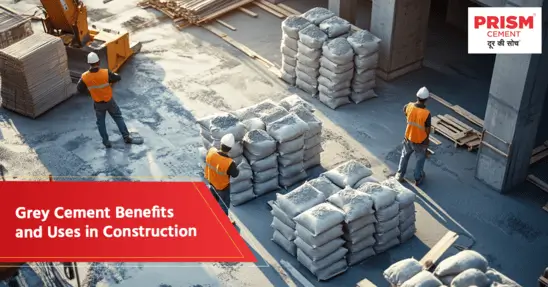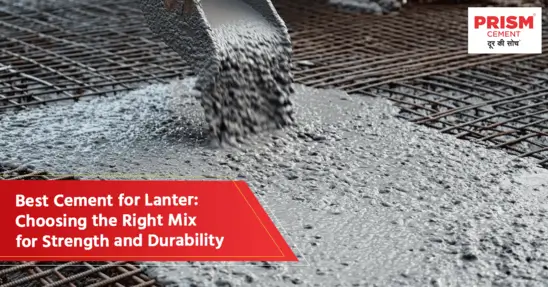In modern interior design, ceilings are no longer just structural components of a room. False ceilings have gained immense popularity for their ability to enhance aesthetics, improve acoustics, and offer practical solutions for lighting and insulation. If you're wondering what is false ceiling and why it's becoming a must-have in homes, you're in the right place. This blog will explain everything from its features and types to its benefits and applications.
What is False Ceiling?
It is, also known as a suspended ceiling, is a secondary ceiling that is installed below the main ceiling of a room. It is typically suspended using metal frames and can be made from materials such as gypsum, plasterboard, PVC, or mineral fiber. They are installed for aesthetic appeal, functional purposes, or both. They help conceal plumbing, electrical wires, and air conditioning ducts, making them an ideal choice for both residential and commercial spaces.
Key Features of a False Ceiling
- Aesthetic Appeal: One of the most significant features and ability to enhance the interior design of a room. You can incorporate creative designs, lighting, and textures to complement the room's theme.
- Concealment of Utilities: They help conceal unsightly wires, cables, and other utilities, keeping your space neat and tidy. This is especially beneficial for homes with exposed ducts or wiring.
- Improved Acoustics: They contribute to better sound insulation. They help reduce echo and absorb sound, making them ideal for rooms like home theaters, offices, or music rooms.
- Thermal Insulation: It can help regulate room temperature by providing an extra layer of insulation. They reduce heat transmission, which can make your room cool in the summer and warmer in the winter.
- Light Diffusion: They are excellent for housing lights and can help diffuse light evenly across the room. The best ones are designed with light integration in mind, ensuring ambient lighting in every corner.
Types of False Ceiling
There are various types, each catering to different needs, preferences, and budgets. Here are a few popular types:
- Gypsum False Ceiling: Made from plasterboard, this is one of the most common types. It’s known for its durability and ease of installation. It offers a smooth finish and is perfect for all kinds of designs.
- Mineral Fiber Ceiling: This type is highly effective in improving acoustics, making it ideal for offices, conference rooms, and auditoriums.
- PVC False Ceiling: It is lightweight, waterproof, and easy to maintain. It’s a great option for kitchens and bathrooms where humidity levels are high.
- Grid Ceiling: A grid ceiling involves laying tiles in a metal framework. This type is highly customizable and easy to repair.
- Wooden False Ceiling: For those looking for a more natural, earthy aesthetic, it offers an elegant look with an added texture that complements any design.
Benefits of Installing a False Ceiling
- Enhanced Aesthetics: A well-designed false ceiling can transform an ordinary room into an extraordinary one. Whether you opt for simple designs or intricate patterns, it adds a stylish touch.
- Increased Durability: They protect your original ceiling from wear and tear, including moisture and dust. They protect the original ceiling surface from stains, cracks, and dust indirectly enhancing lifespan through reduced wear.
- Energy Efficiency: As mentioned earlier, they provide excellent insulation. By keeping the temperature balanced, they reduce the need for heating or cooling, thus lowering your energy bills.
- Improved Lighting: They allow you to hide lighting fixtures, creating ambient lighting effects. You can also install recessed lighting or LED strips, which add a modern touch to your space.
- Noise Reduction: They are ideal for reducing noise, making them beneficial for multi-story buildings, apartments, or homes located near busy streets.
Best False Ceiling Ideas for Home Applications
- Living Room: For a sophisticated living room, you can go for a gypsum false ceiling with LED strip lights. This setup will give your space a sleek and modern look. You can also add a central design element like a circular pattern for extra flair.
- Bedroom: In the bedroom, it can be used to create a cozy ambiance. Choose a design that has soft lighting and calming tones to promote relaxation.
- Kitchen: Since kitchens often face humidity and moisture, PVC false ceilings are perfect for this area. They are water-resistant and easy to clean, making maintenance a breeze.
- Bathroom: For bathrooms, PVC false ceilings are a practical choice due to their water resistance. You can incorporate recessed lighting and ceiling vents to create a spa-like atmosphere.
- Home Office: If you're setting up a home office, consider mineral fiber ceilings for soundproofing. This will ensure minimal disturbance from outside noise, allowing you to focus on work.
Maintenance Tips for Long-Lasting False Ceilings
To ensure your false ceiling remains in top condition, follow these simple maintenance tips:
- Regular Cleaning: Dust and cleaning at regular intervals to avoid buildup. Use a soft cloth or vacuum cleaner to prevent damage.
- Check for Leaks: Occasionally check for signs of water leakage, especially if the ceiling is above bathrooms or kitchens.
- Repair Damages Immediately: If you notice cracks or other damage, get it repaired quickly to prevent further deterioration.
Conclusion
Incorporating a false ceiling into your home not only enhances the aesthetics but also offers practical advantages such as improved acoustics, thermal insulation, and hidden utilities. Whether you choose gypsum, PVC, or mineral fiber ceilings, the variety of options available means there's something for every home style.
To maintain the strength and integrity of your false ceiling, using a high-quality product like Prism Champion All Weather Cement can provide additional benefits, such as enhanced moisture resistance and increased durability.
Prism Cement, known for its high-strength products, ensures that your ceiling work and the overall construction are solid and long-lasting.
FAQs
Q1. What is False Ceiling and Why is it Used in Modern Homes?
Answer: It is a secondary ceiling installed below the main ceiling to conceal utilities and enhance the aesthetic value. It's widely used in modern homes for better insulation, lighting, and acoustics.
Q2. Which is the Best False Ceiling for Homes in Humid or Monsoon Areas?
Answer: For homes in humid or monsoon-prone areas, PVC false ceilings are the best choice. They are water-resistant, easy to maintain, and durable under high moisture conditions.
Q3. Benefits of Installing a False Ceiling?
Answer: Installing it offers benefits such as improved aesthetics, better acoustics, energy efficiency, and a more organized space by concealing wires and ducts.
Q4. How Long Does False Ceiling Work Take and Is It Messy?
Answer: The installation typically takes 2-3 days depending on the complexity and size of the area. It is generally not a messy process, especially when done by professionals.
Q5. Which Type of False Ceiling is Best for Living Rooms?
Answer: For living rooms, gypsum false ceilings with recessed lighting or intricate designs are ideal for creating a sophisticated and elegant look.




